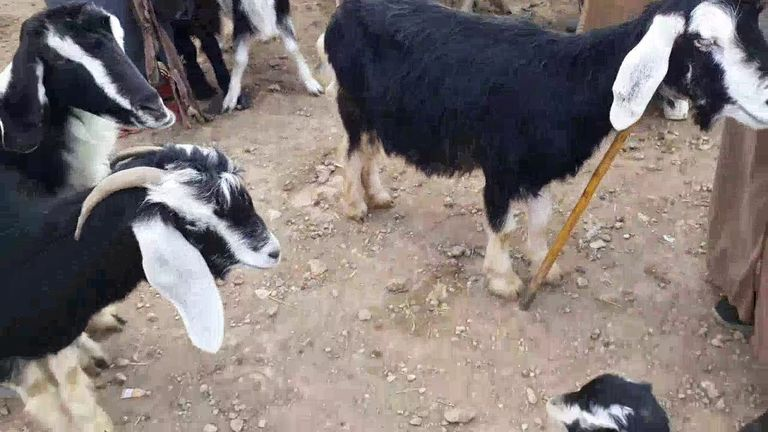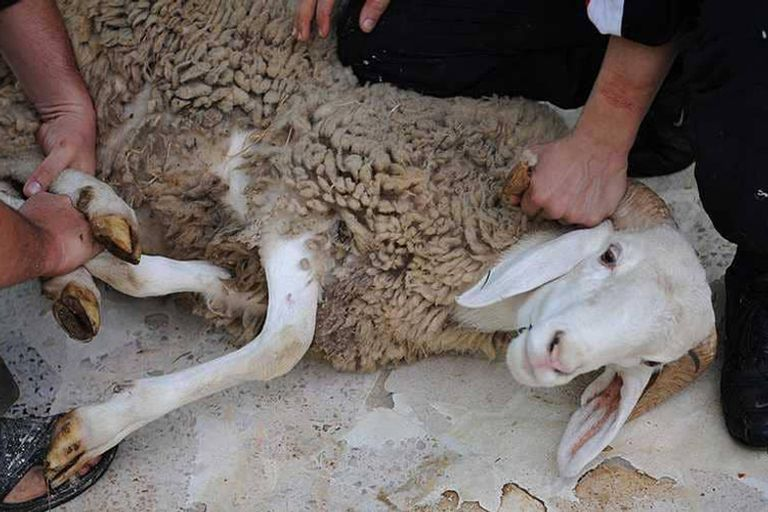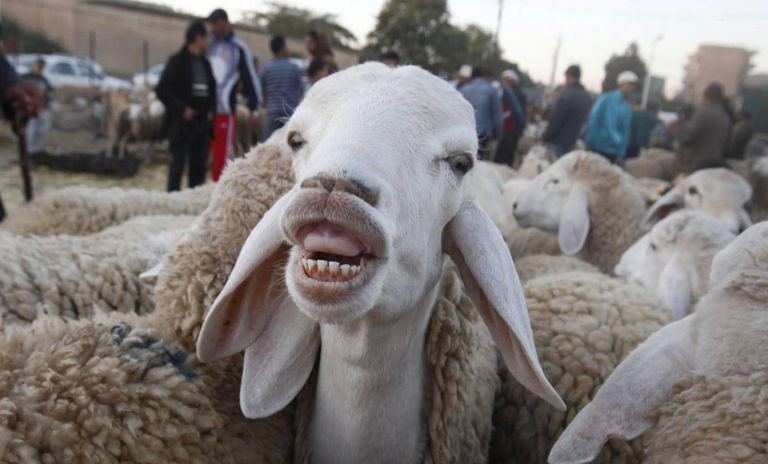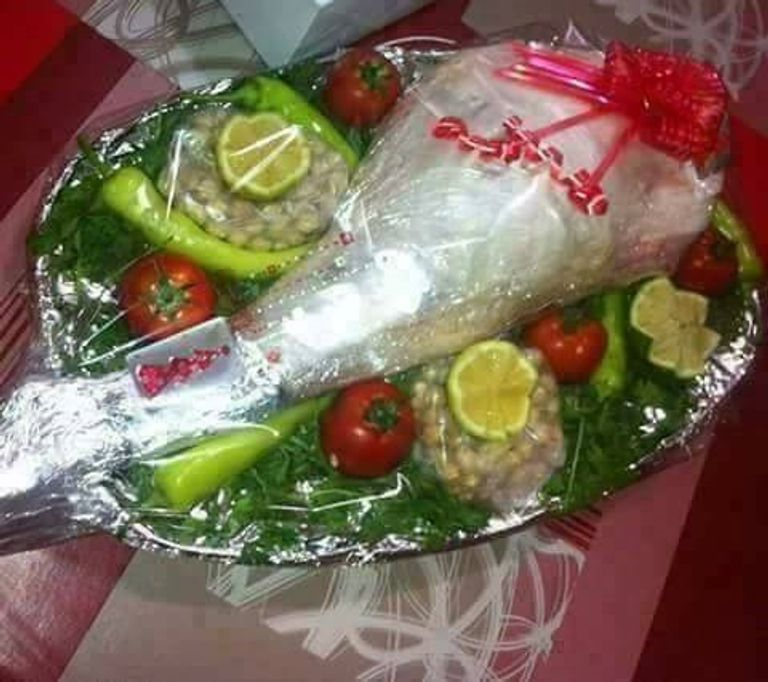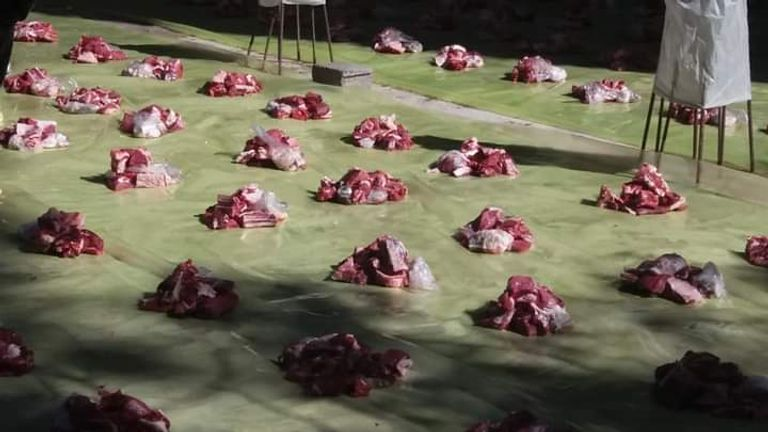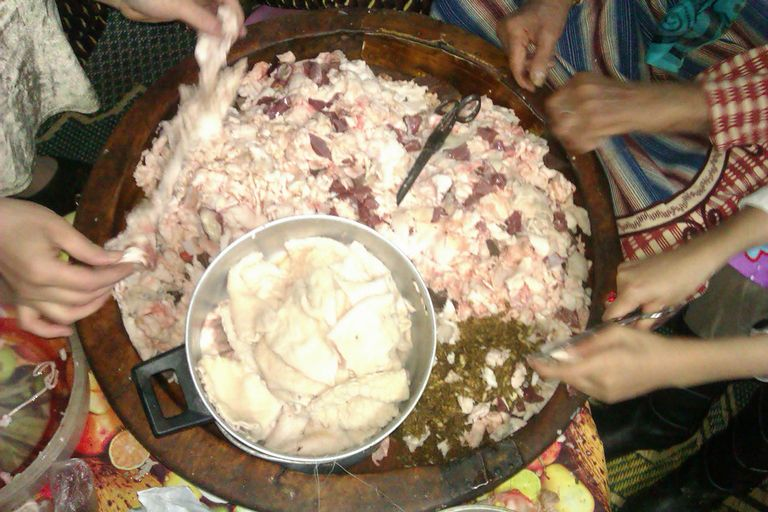9unique customs of the Amazighs of Algeria on Eid al-Adha... the strangest of which is "blooding"
Algerian women from the Berber Kabylie region on Eid al-Adha - archive
The Algerian folk and cultural heritage abounds with real and legendary heritage stories, with which you write the story of a people hundreds of thousands of years old.
There is hardly an Algerian occasion or region devoid of old tales, many of which are still embodied in inherited customs, as is the case with the Amazighs of Algeria.
It suffices to visit a small village in this Arab and Amazigh country to discover “another strange or unique world” in which myths, legends and even historical facts prevail. These customs are remembered by the people of these areas on religious and social occasions.
One of the most religious occasions that narrates part of the Amazigh stories in Algeria is Eid al-Adha, with small details of mythical, mythical or real stories derived from the Amazigh folklore that is deeply rooted in history.
A village in the Amazigh Kabylie region in Algeria
One of the most Algerian Amazigh regions that still preserve this heritage is the Amazigh Kabylie region, specifically in its small towns and villages known as “Dshour”, which is the plural of the word “dashra” which means the small village.
With this "dashur", you discover strange customs on Eid al-Adha, and behind each strange custom is a story that is no less strange, in which myths and inherited legends are mixed, to create a unique Eid atmosphere from the rest of the Algerian regions.
In this report, "Al-Ain Al-Akhbariya" reviews 9 most prominent and unique customs of the Berbers of Algeria on Eid al-Adha.
Eid sheep in Algeria
Sacrifice a goat on the Day of Arafa
One of the oldest customs in the small villages of the Algerian Kabylie region is the custom of buying and slaughtering a goat, not on the day of Eid al-Adha, but on the "Day of Arafa".
The Berbers of Algeria attach a great "sanctity" to this day, like the days of Eid al-Adha, and fasting as if it is "compulsory" in these small and charming towns with their beauty.
And because they know that Islam is a religion of ease and not hardship, the acquisition of a goat for the day of Arafat is not obligatory “for everyone in the village”, and a group of relatives can share it, and it is also allowed to buy between one to two kilograms of meat, and in the weakest cases a chicken is slaughtered.
After the goat is slaughtered in the early morning of the day of Arafat, the women in these villages begin to prepare the dinner meal, which is "couscous with goat meat and vegetables", which is called "the meal on the night of Eid al-Adha" and in the Berber dialect, "Amansi for Eid".
Teos for sale in the Algerian Kabylie region
Eyebrows stained with blood
There is also a very strange custom among the people of the villages of the Amazigh Kabylie region on Eid al-Adha, which is “obligating girls” to “paint between their eyebrows with a little blood of the sacrifice with the tip of the knife with which the sheep was slaughtered,” and there are those who say that it does not exceed one or two drops of that blood.
These rituals are derived from an ancient Amazigh legend called "saksaghakant ashkarka", which means "removal of polytheism".
And if the girls refuse to perform this strange ritual, they are subjected to punishment from their mother, but after the passage of the so-called “days for tenths”.
The process of slaughtering the sacrifice
Prevent children from crying
The Berbers of the Algerian Kabylie region have another custom, which is to "prevent punishing or crying any child" during the days of Eid al-Adha.
In their beliefs, this "prevents grief for the child in the upcoming feasts of his life."
Algerian children from the Amazigh Kabylie region
Avoid the "grandparents' curse"
One of the strange and wondrous customs in this Algerian region is also linking the preparation of dinner to the obligation to "pop up couscous".
After slaughtering and skinning the sacrifice and preparing the "Bozlov" meal for dinner, no housewife in the Algerian Berber villages can forget "the couscous", otherwise "the curse of the ancestors will befall them."
A Amazigh superstition that still prevails in the villages of the Algerian Kabylie region, as many families resort there to what is called "Tafawir couscous", which means "cooking couscous on steam", and the aim of this in their ancient beliefs is to "avoid the curse of the ancestors", which is called in the Kabyle dialect as " slander".
Blow up the couscous
parts of the sacrifice
Another Amazigh tribal custom on Eid al-Adha in Algeria, which is removing the right shoulder from the sacrifice, with part of its neck and another part of the liver for family members to eat.
It is stipulated in this custom that these parts of the sacrifice should be removed “before the call to prayer of Maghrib”, while the source of this custom is unknown.
A Amazigh village in Algeria
The eye and nose of the sheep
The strange customs of the people of the Berber Kabylie region during Eid al-Adha do not stop at the foregoing, as there are things that are even stranger than them.
The villages and towns of this Algerian region, based on ancient Amazigh legends, are committed to "not offering the sheep's eye or nose to the girls of the house."
According to those legends and myths, giving them these parts of the sacrifice is an "omen of something", and it also states that if the girl eats the eye, "she will be under everyone's watch, and she will be subject to criticism and discover all her lapses and mistakes."
As for the "legend of the sacrifice nose", it says that the nose "symbolizes the frowning", while in the beliefs of the Amazighs, the girl is required to "be always smiling."
Eid sheep in Algeria
meat feast
The Amazighs of Algeria are famous for the customs of social solidarity on all religious and social occasions, and during Eid al-Adha, one of the aspects of that solidarity emerges in a traditional custom, which is the "meat feast".
Families exchange among themselves a “basket” filled with flour, the right shoulder of the sacrifice, part of the bosloof and tripe, a box of henna, pieces of soap, and two boxes of coffee and sugar.
Meat feast in Algeria
left shoulder
This custom, which carries all the values of social solidarity among the Berbers of Algeria, is not without some oddities, and it is carried out with rituals and calculations that cannot be bypassed.
In the customs of the Algerian Kabylie region on Eid al-Adha, if there is a married sister in the family, it is stipulated that he “presents her the left shoulder,” and if there are other married sisters, he gives them “the right thigh and the left thigh.”
A Amazigh village in Algeria
cash gift
And because it is an area that sanctifies solidarity and collective solidarity, the poor among them or those with limited income have a share of the joy of Eid.
In the event that one of the family members is unable to purchase the Eid sacrifice, his brothers and sisters present him with a “cash gift” or its share of meat, which is a custom prevalent in all the Amazigh villages of Algeria.
Dividing the meat in the Algerian waza’ah custom
bone fracture
The customs of the Berbers of Algeria on Eid al-Adha extend to its third day, which is called “Marzi Igsan”, which means “broken bones”.
It is also a strange custom, in which housewives strip meat from the thighs and shoulders, and prepare for frying or grilling as a feast for lunch.
As for those bones, they are not thrown away, as they are cut up and then broken, and “with them he prepares dinner on the third day” of the feast.
https://al-ain.com/article/algeria-berber-customs-eid-al-adha





